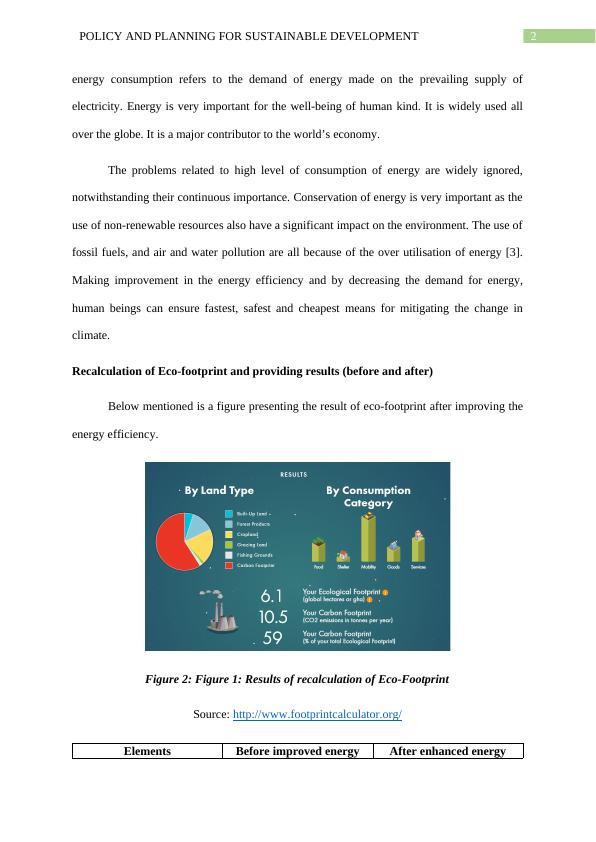Policy and Planning for Sustainable Development
This assignment is worth 20% of the Unit’s totals marks. It involves calculating the eco-footprint, selecting and analyzing a policy, discussing changes to the policy, and evaluating its effectiveness in achieving ecological sustainable development goals.
10 Pages1710 Words190 Views
Added on 2023-04-10
About This Document
This document discusses policy and planning for sustainable development, focusing on energy consumption and eco-footprint calculation. It also explores the Commonwealth Energy Policy and provides policy recommendations for positive impact.
Policy and Planning for Sustainable Development
This assignment is worth 20% of the Unit’s totals marks. It involves calculating the eco-footprint, selecting and analyzing a policy, discussing changes to the policy, and evaluating its effectiveness in achieving ecological sustainable development goals.
Added on 2023-04-10
ShareRelated Documents
End of preview
Want to access all the pages? Upload your documents or become a member.
Policy and Planning for Sustainable Development
|11
|1852
|55
Applied Ethics and Sustainability
|9
|2086
|88
Measurement of Ecological Footprint and Sustainable Development
|7
|1376
|250
Case Study: Impact of Additional Population on Australian Economy
|5
|1083
|19
Renewable Energy in Developing Countries: Challenges and Solutions
|13
|3077
|105
Personal Footprint, Product and Organizational Sustainability Analysis
|10
|2251
|20



